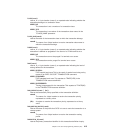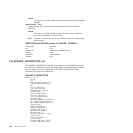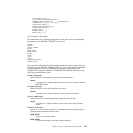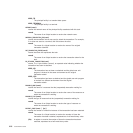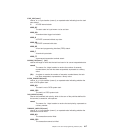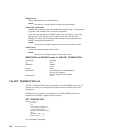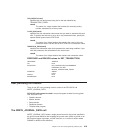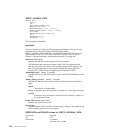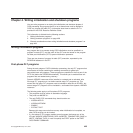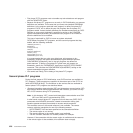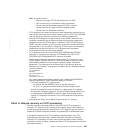WRITE_JOURNAL DATA
DFHJCJCX [CALL,]
[CLEAR,]
[IN,
FUNCTION(WRITE_JOURNAL_DATA),
FROM(block-descriptor),
JOURNALNAME(name8 | string | ’string’ ) |
JOURNAL_RECORD_ID(name2 | string | ’string’),
WAIT(YES|NO),
[RECORD_PREFIX(block-descriptor),]]
[OUT,
RESPONSE(name1 | *),
REASON(name1 | *)]
This command is threadsafe.
Important
There is a restriction in using the XPI early during initialization. Do not start exit
programs that use the XPI functions TRANSACTION_DUMP,
WRITE_JOURNAL_DATA, MONITOR, and INQUIRE_MONITOR_DATA until the
second phase of the PLTPI. For further information about the PLTPI, refer to
Chapter 4, “Writing initialization and shutdown programs,” on page 425.
FROM(block-descriptor)
specifies the address and the length of the journal record.
The block-descriptor comprises 8 bytes of data. The first 4 bytes hold the
address of the data to be written. The second 4 bytes hold the length of the
data. The block-descriptor is moved by the DFHJCJCX macro call to the
location JCJC_FROM, which is mapped by the DFHJCJCY DSECT.
JOURNALNAME(name8 | string | "string")
specifies the name of the CICS journal or log to which the FROM data is to be
written.
JOURNAL_RECORD_ID(name2 | string | "string")
specifies a 2-character value to be written to the journal record to identify its
origin.
name2
The name of a 2-byte location
string A character string that is limited to a length of 2 in the generated code
"string"
A character string enclosed in quotation marks, limited to a length of 2
in the generated code.
RECORD_PREFIX(block-descriptor)
specifies the optional user prefix.
WAIT(YES|NO)
specifies whether CICS is to wait until the record is written to the journal or log
before returning control to the exit program.
RESPONSE and REASON values for WRITE_JOURNAL_DATA:
RESPONSE REASON
OK None
EXCEPTION IO_ERROR
JOURNAL_NOT_FOUND
420 Customization Guide




